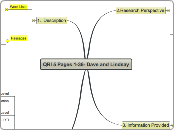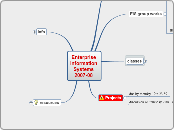Strategies Used to Avoid ID Through Simple and Cost Affective Measures.
Identify Prerequisite Knowledge
Results Converted By
Instructional Purpose
Classifying Learning
Task
Analyzing Learning Tasks
Procedural Analysis
Cluster Analysis
Learning Hierarchies
Comgination of Above
Skills
Feelings
Knowledge
Combination of Above
Building Skills
Change Attitudes/Feelings
Increase Knowledge
Performance Objectives
Influenced By
Content Analysis
Logical collection of subject matter.
Task Analysis
How work is or should be performed.
Goal Analysis
Specific and measurable goals for
learner accomplishment
Organizational Goals
Results desired by organizaiton
Instructional Goals
Results desired from
instruction
Time & Cost Dictate Everything
Major Reference and Influence to
Mastering the Instructional Design Process
Project Management Influenced
Design Phase Complete
Design Brief Results
1. Client request changes.
2. Client is satisfied
Performance of Learning Based on Bloom's Taxonomy
Four Steps to Follow
Repeat Purpose Statement
Reaffirm Instructional Goals
Identify Primary Perfomrance Tasks
Specify Prerequisite Knowledge & Skills
Stakeholders
Keep Line of Sight Focused
Maintained Throughout
ADDIE Process
ADDIE Concept
Instructional Design Model
The Design Phase
Designing and Delveloping for Instructional Design
Planning Noninstrucitonal Interventions
Creating Design Specifications
Design Considerations for Noninstructional Products
Identify the Problem
Provide Solutions
Measurable Goals
Timelines
Evaluation Methods
Table of Reasonsibilities
Justifying Appropritate Intervetions
Must get buy in from stakeholders on why noninstructional intervention is the solution over instructional intervention.
Considerations for money, time, and resources are still a factor.
Appropriate Interventions
Feedback
Job Performance Aids
Rewards System
Employee Selection Practices
Organizational Redesign
Designing Instructional Interventions
Message, Visual, and Motivational Design Principles
Motivational Design
Gain Learners Attention
Demonstrate Relevance to Learner
Learner Confidence
Learner Satisfaction
Visual Design
Lines
Form
Shapes
Message Design
Perceptibility
Chucking
Selecting Delivery Modes
Direct Real-Time Learning
Individual Instruction
Group Instruction
Mass Instruction
Media Delivery Methods
Complex
Interactive Video
Computer Program
Simple
Print/Audio
Slides/audio
Choosing instructional Strategy
Possible Contraints
Control
Instructional Tactics
Approaches and strategies used to create results driven instruction
Instructional Strategies Aligned with Instructional Goals and Anticipated Learning Outcomes
Methods of Instructional Strategies
Deductive Exposition
Drill and Practice
Inductive Exposition
Intrinsically Programmed Discovery
Adaptively Programmed Discovery
Guided Discovery
Free Exploratory Discovery
Impromptu Discovery
Instructional Strategies
Micro-Instructional
All parts of unit or lesson are dictated
Macro-Instructional
Instructional program that is governed such as an entire course
Organizing ID Programs/Products
Specify/Sequence Learning/Performance Outcomes
Learning and Performance in to be sequenced in order to meet performance objectives without missing critical targets
Indentify/Sequence Instructional Goals
Performance Objectives Defined
Types of Performance Objectives
Avoiding Mistakes
Decribing Parts
Condition
Criterion
Performance
Classification
Performace-Based
Scope of Instructional Programs
Organization Wants Trump All
Depends on learner needs and client wants.
Learner Needs Require
Learner/Management
Commitment
Attention
Time
Comparable Concepts
Require Stakehold Involvement
End Results of Instruction
Incorporate Bloom's Taxonomy of Learning
Performance Based Focus
Knowledge, Skills, Attitude are Central
Time and Cost
Branch: Design Phase
Maintain Line of Sight Alignment
Assessments
Strategies
Objectives
Goals
Purpose
Needs
Procedures of Design Phase
Compose Performance Objectives
Performance objectives provide detailed expectations.
Objectives Defined
Student performance-based consideration Condition of performance measured
Acceptable student standards
Objectives include
Condition component
Performance Component
Criterion Component
Conduct Task inventory
Helps determine learners readiness
Maintains steps to perform complex task
Maintains learning task to achieve goal
Desired goals
Logically organized content to
achieve knowledge and skill to meet
intructional goals
Generate Testing Strategies
Criteria Match
Test criteria match criteria in objectives
Condition Match
Test conditions match objective
Performance Match
Student performance matches Bloom's learning
Test Student Performance
Calculate Return on Investment (ROI)
Over/Under estimates must be accurate in order for clients to make a solid decision.
Items to Include in Cost Analysis
Salaries
Travel & Meals
Office Supplies
Printing
Equipment Expenses
Media Development
ADDIE ROI Calculation
Cost estimate of ADDIE process
Rothwell, Benscoter, King, King
Designing and Developing for Instructional Design









